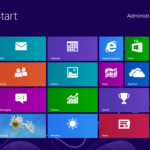[vc_row][vc_column][vc_column_text]Like many people in Nashville, music has always been an important part of my life. I play bass guitar in a rock ’n’ roll band, and before getting into technology, I worked in the music industry.
When those two aspects of my life — music and technology — collide, the results can be unpredictable and disruptive.
At Concept Technology, we have the honor of working work with several Nashville-based music business clients, so I recently reached out to experts to find out how technology has changed the industry and the listening experience.
From CDs to MP3s and iTunes and now online streaming, changes in the way people want to listen to music have driven the industry to respond and evolve, but not without significant growing pains.
[/vc_column_text][wproto_quote text=”Consumers just don’t purchase music the way they used to. For us, it’s less about forcing people to consume music the way we are used to and more about responding to the way music is actually being devoured by the fans — and the truth is more music is being consumed than ever before.”” author=”– Rob Baker, owner of RLB Artist Management LLC and manager of emerging country music artist Brett Eldredge”][/vc_column][/vc_row][vc_row][vc_column][vc_column_text]Though its distribution was bumpy at first, due to limited bandwidth, digital music is now mainstream. Because of Apple’s significant clout in the early digital music market, its mandate that every song — no matter its artist or popularity — cost 99 cents was a devastating blow to the music industry.
 On iTunes, albums with 10 tracks initially cost $9.99, so if you bought 10 singles you paid exactly the same price as if you bought the entire album. This effectively unbundled records as consumers bought a couple of singles instead of the higher-priced album.
On iTunes, albums with 10 tracks initially cost $9.99, so if you bought 10 singles you paid exactly the same price as if you bought the entire album. This effectively unbundled records as consumers bought a couple of singles instead of the higher-priced album.
Artists fought this trend by producing records with 10 singles on them instead of three, the previous norm. When Apple allowed singles to be priced at $1.29 a few years ago, it became a better deal for consumers to buy entire albums instead of singles, and even with the increased price, sales remained strong.
Artists collect royalties on their songs in one of two ways. Mechanical royalties are paid whenever a copy of a song is made — such as when a CD is pressed or a track is downloaded. Performance royalties are paid whenever a song is broadcast, streamed or performed at an event. With the evolution to streaming services, mechanical royalties have shrunk and performance royalties have risen. For internet radio streaming service providers like Pandora:
- Artists are paid a fraction of a penny for every song streamed.
- Every additional listener costs service providers as soon as he or she listens to a song for more than 20 seconds.
- Governed by the Copyright Royalty Board, users of non-interactive streaming services cannot play more than three songs from an artist in an hour and consumers cannot “skip” more than a certain number of songs in an hour.
So, what are innovative artists, managers and publishers doing about the changing balance of these revenue streams?
“On the plus side, (streaming services) give a new artist the opportunity to be heard, and for that, I love them,” said Baker. “As a consumer, the access to such an enormous catalog is fantastic. As a manager, they provide insight into what fans are listening to. Spotify, iTunes Radio and their competitors provide us with very useful tools to see what music the fans are discovering on their own.”
On the negative side, even with advertising, it takes 200-plus streamings of a song to generate the same income as a single download
Piracy also needs to be addressed. User-generated content on websites such as YouTube frequently feature pirated music, but there’s been little to no public education done to explain the process you must go through to get permission to publish UGC with copyrighted songs.
“The industry and legislation need to modernize at a faster pace,” Baker said. “Music creators deserve to be paid fairly and there’s a proper balance to be struck — we just haven’t reached it, yet.”
Let’s hope, as consumers and creators, we find the balance between technology and music soon.
This post also appeared in The Tennessean.
[/vc_column_text][/vc_column][/vc_row]

